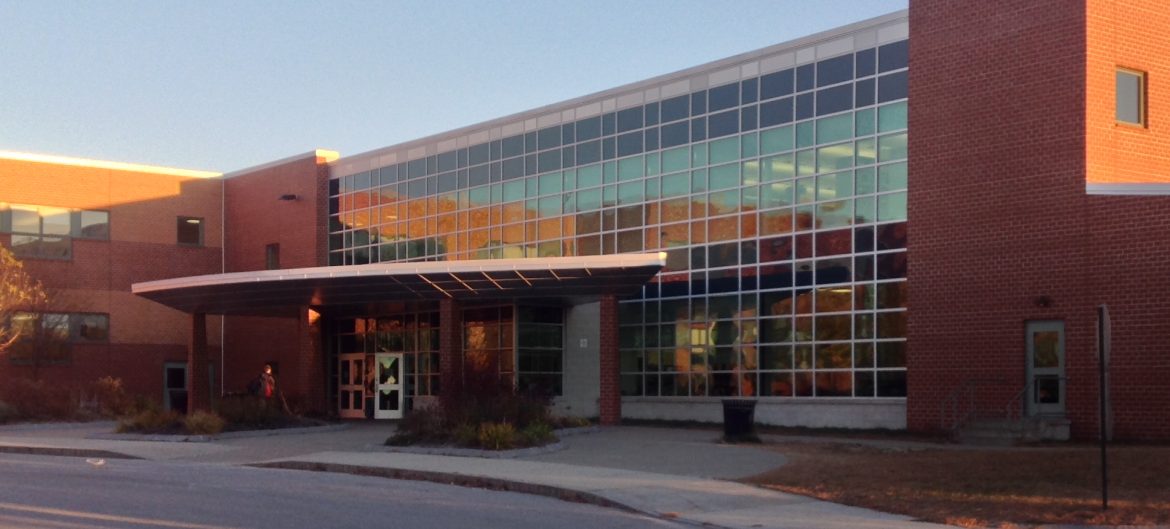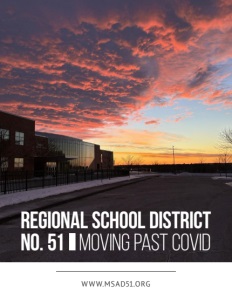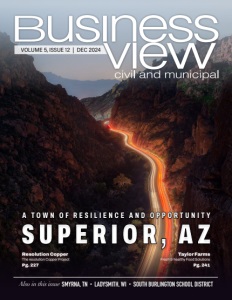Regional School District No. 51
Moving past COVID
The power of in-school learning
When the COVID pandemic hit the education sector in 2020, three quarters of the nation’s public schools moved some, or all, of their classes to online, distance-learning formats. Almost overnight, teaching methods were radically altered and learning environments drastically changed, as three quarters of America’s 50 million public schoolchildren were now learning some, or all, of their lessons on a screen, at home, by themselves.
One school district that was prepared for the transition to remote learning was Regional School District No, 51, however, the district firmly believes in the benefits of in-class learning and the socialization that comes with it.
A superintendent takes stock
Jeff Porter is the Superintendent of Regional School District No. 51 in Cumberland and North Yarmouth, Maine. A highly-rated district, No. 51 has 2,250 students in four schools: Mabel I. Wilson School (PK, K-3), Greely Middle School (4-5), Greely Middle School (6-8) and Greely High School (9-12). (The Greely schools are named after Elizabeth and Eliphalet Greely, a sea captain, businessman, bank president, and one-time mayor of Portland. Mabel I. Wilson was a local educator and town leader.)
Porter has been a classroom teacher, a school principal, an Assistant Superintendent, and Superintendent since 2014. He has seen how technology has become embedded in the educational realm and is clear-eyed about its promises, possibilities, and problems. “Before the pandemic, there was a lot of discussion about public education moving into more of a technological phase,” he relates. “Could the bricks and mortar part of education be replaced by technology – educating students virtually? Well, as much as I think there are some students that might benefit from that, we certainly learned from the COVID experience that in-person learning is the most important and critical part of public education. And I’m not sure if even educators knew that before. Now, everybody has recognized its importance.”
“Content is still important,” Porter continues. “We live in the information age, and that’s something that our district has been focused on for many years. We made a big commitment over the last decade to make sure that every student has access to a learning device. At the K-8 level, we have either iPads or Chrome Books for every student in the district. At the high school, we have students who bring their own device, and about a hundred students that use our devices. Technology is a tool. The computer is an apparatus for students to be able to look up information. But now, we also have to teach new skills around discerning that information – being able to evaluate and figure out if the information makes sense, if it’s true, if it’s accurate. That is a huge shift in public education: how we view information. But that’s the new reality. And students have to be taught those skills: how to look at information, how to discern it, how to evaluate it, and how to measure it for accuracy. That is an education component that we have to teach now.”
“And public education is more than just content knowledge,” he adds. “There’s a ‘citizenry’ aspect, which was there at the beginning of public education in our country, and I think we’ve gotten back to that a little bit. The pandemic taught us a lot of things, one of which was to reinforce the values of public education. So we’re here to help students develop those citizen aspects and attributes and to make sure they will be successful in the 21st century economy that we live in now.”
Skills and standards
According to the District’s Vision Statement, the essential skills for that 21st century education are: Communication, Collaboration, Creativity & Innovation, Critical Thinking & Problem Solving, and Citizenship. “We really are teaching skills and not finite content,” says Porter. “The content is more of a way to use those skills that you need for life. Content changes and the importance of content changes. But the skills don’t change much. If you can teach kids the skills in order to be true life-long learners, then that is one of the most important parts of public education that we can offer.”
Porter also relies on the state standards that have been promulgated by the State of Maine, most of which reflect the Common Core. “I think in our district, we’ve been really serious about those standards, which is good practice in any school district,” he avers. “It’s slow and steady and making sure we are teaching a combination of content and those critical skills. We also focus on wellness and that students are comfortable in their environment, and that we’re providing an environment that is conducive to learning. It’s not rocket science; we’re just consistent and deliberative about what we do.”
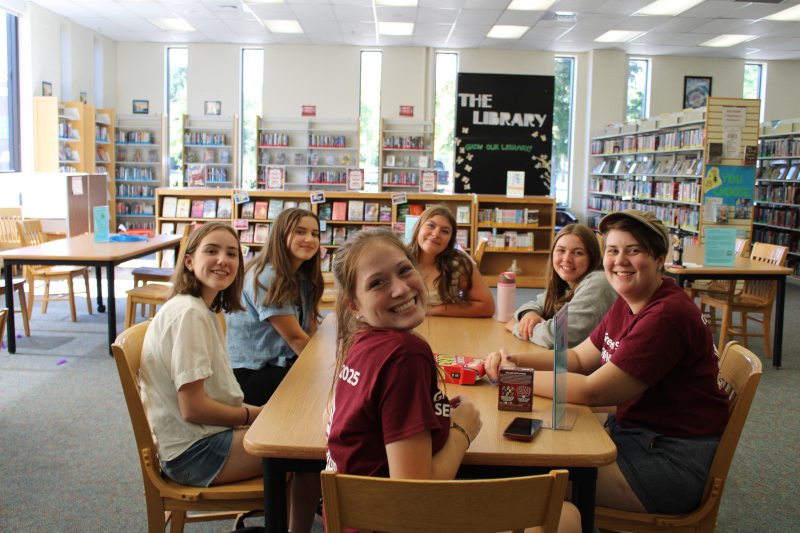
Introducing alternative paradigms
Since Porter arrived, he and the School Board have been responsive to the needs and desires of the greater school community. “A few years ago, we heard a desire for more offerings at our high school,” he recounts. “We didn’t have an alternative education program when I came here, so that is something that we put into place. Another part of our strategic plan was non-categorical learning, meaning blending regular education, special education, and other experiences together. A third component that we put into place was ‘pathways.’”
In education, pathways are intentional learning structures that emphasize the importance of personal passions, mentorship, peer relationships, and technology in helping students connect in- and out-of-school experiences. Career pathways are a combination of education, training, and services that prepare students for a variety of postsecondary options; they can include internships, apprenticeships, and volunteer opportunities. Personalized learning pathways allow students to work with teachers to create a blend of educational experiences that meet graduation requirements.
“So now, we have a pathways coordinator at our high school,” Porter reports. “And we have a good portion of our students – 50-80 annually – who participate in independent projects, many of which involve going out into the community and working with our partners, who take in students and work with them. The students are logging their experiences and there are many ways that they can exhibit their work. Sometimes, a student is not working with a partner; they’re working on a research topic of interest to them. All of our silo projects look very, very different, but our pathways coordinators, our administrators, and our teachers have done an excellent job over the years, working together to make sure that those projects are seamless with our curriculum offerings. So, I think that we’re in a really good place. It’s a very popular experience for students.” Greely High School also offers an International Baccalaureate (IB) program for students that wish to excel academically.
Good teachers
Every school superintendent will tell you that good teachers will make good students. At the district schools, professional learning time is set aside on early release Wednesdays, several times a month. And while there was a significant shortage of teachers during the pandemic years, Porter says the district is close to 100% staffed, today. “I give a lot of credit to our administrators for their recruiting efforts,” he notes. “80% of a school district’s budget is labor and we’ve hired a lot of new teachers and specialists over the years in areas that were gaps for us. We’ve put a lot of professionals in our special education programs: social workers, speech language clinicians, OTs (Occupational Therapists) and PTs (Physical Trainers), along with MTSS interventionists and staff coaching roles. And there are a lot of teachers that will recruit their colleagues from other districts. We try to keep our district as attractive to our applicants as we possibly can — salary and benefits and working conditions. It’s always a balancing act, but at the end of the day, we try our best to do that. We have a supporting staff plan that focuses on how we support our staff and how we can get feedback on things that we’re doing or not doing. So, the human resources piece is something that I think about every day. I know that a good staff means we’re educating our kids and keeping them current.”
A new district project
Every school superintendent will also tell you that the system’s physical assets need to be constantly maintained and upgraded. “Each summer, we do a lot of work on our facilities,” says Porter. “This past summer, we got some state and local funds to upgrade our buildings — putting in windows and replacing floors. In June, voters approved a multi-phased, capital project that we will be working on over the next three years: a new primary school. We’ll be shifting all our grade configurations after the school is built. We call it the One Campus Project. We’re in the design phase, right now, and 6 months from now we will have broken ground. The Project will relieve a lot of pressure on us. We have 29 modular classrooms right now in our district so we’ll be replacing all of those as part of that project. We’ll also have a new artificial turf field with athletics and play space. And we’re redesigning the entire campus – moving roads, parking, etc. to make it more user-friendly. We have an addition going on to what will become our intermediate school as part of this package and a lot of other smaller phases. It’s a well-rounded look at what the school district needs. It was in a five-year review and finally got passed, so we’re very excited about that.”
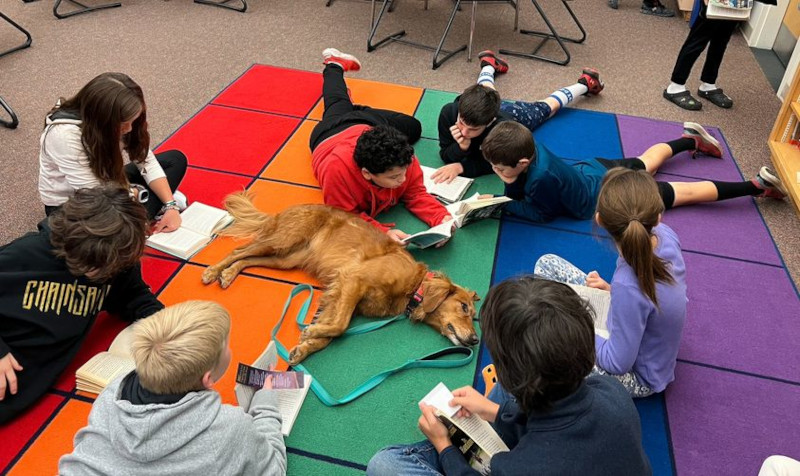
The rewards
Porter says that the most rewarding part of his job is being able to get “that balcony view of what we’re doing now and what we could be doing in the future; to actually see things that people have said they want that we now have. It’s exciting to be part of that process and to know that you are getting to every student in the district. We work every day to see that every single kid is important and special. And part of my role is to make sure that we are doing that. That’s really rewarding.”
AT A GLANCE
Regional School District No. 51
WHAT: A four-campus school district with over 2,250 PK-12 students
WHERE: Cumberland and North Yarmouth, Maine
WEBSITE: www.msad51.org
